

Uh oh...
It appears that you're using a severely outdated version of Safari on Windows. Many features won't work correctly, and functionality can't be guaranteed. Please try viewing this website in Edge, Mozilla, Chrome, or another modern browser. Sorry for any inconvenience this may have caused!
Read More about this safari issue.

The U.S. Marshals Service is the oldest law enforcement unit in the United States, protecting the federal courts and enforcing judiciary procedures like transporting federal prisoners, managing assets from illegal activities and operating the Witness Security Program. President George Washington appointed the first 13 Marshals in 1789. The agency has served through the most significant national crises of the last two centuries, including wild west outlaws, women’s suffrage, school desegregation, drug trafficking, 9/11 recovery and international fugitive investigations.
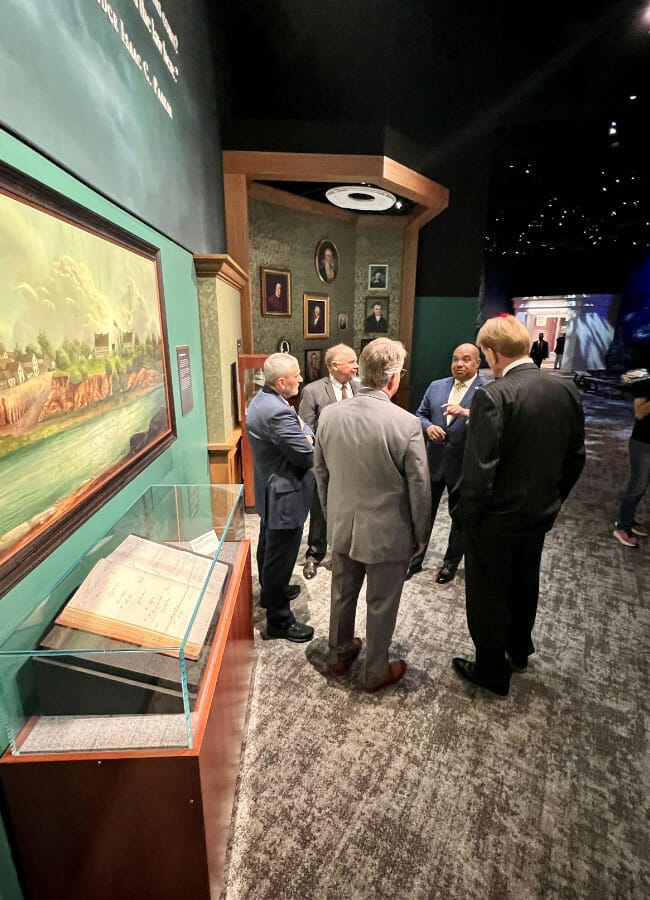
On July 1, a 16-year dream came true for Arkansas and the broader U.S. Marshals’ community as the U.S. Marshals Museum came home. A rallied group of donors, supporters, dignitaries, and active and retired agents were among the first guests to experience the museum. They played with the interactive displays, watched videos of historical accounts, and walked the halls where the story of their lives and those protected were on full display.
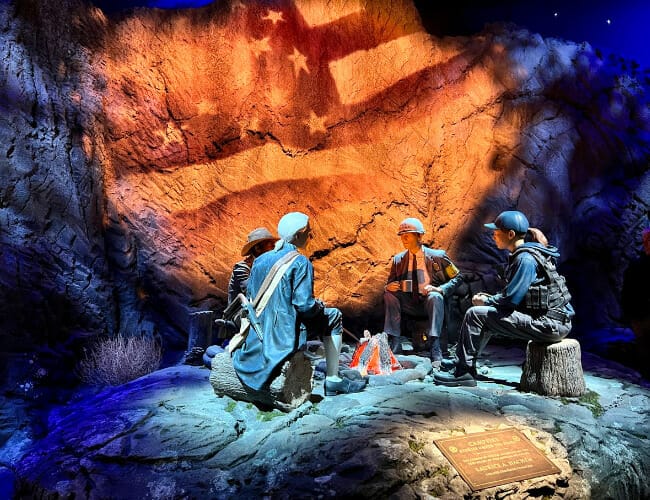
History of the U.S. Marshals
As George Washington began establishing boundaries for justice for the United States of America, he knew setting up powers of government and those who would protect and enforce it was of utmost importance. On Sept. 16, 1789, Washington commissioned the first 13 U.S. Marshals, judiciary judges and attorneys. Their primary responsibility was to enforce orders for the federal courts and to protect states’ autonomy.
The Marshal Mindset drives much of the thinking and decision-making for U.S. Marshals. A three-prong approach focuses on creativity, flexibility and humanity. President Ronald Reagan once said, “Virtually every federal law enforcement initiative involves the Marshals Service… this all adds up to a heavy burden of responsibility.”
While U.S. Marshals are appointed annually by the President, there are times when a U.S. Marshal may need to deputize civilians or bystanders to build a posse to help fulfill a specific assignment. These temporal deputy duties are usually initiated with an ending moment stated based on time or project completion. The first sting completed by a female Marshal used this exact technique to apprehend a suspect without weaponry. Male bystanders were deputized on the spot to use their physical power to collect the criminal.
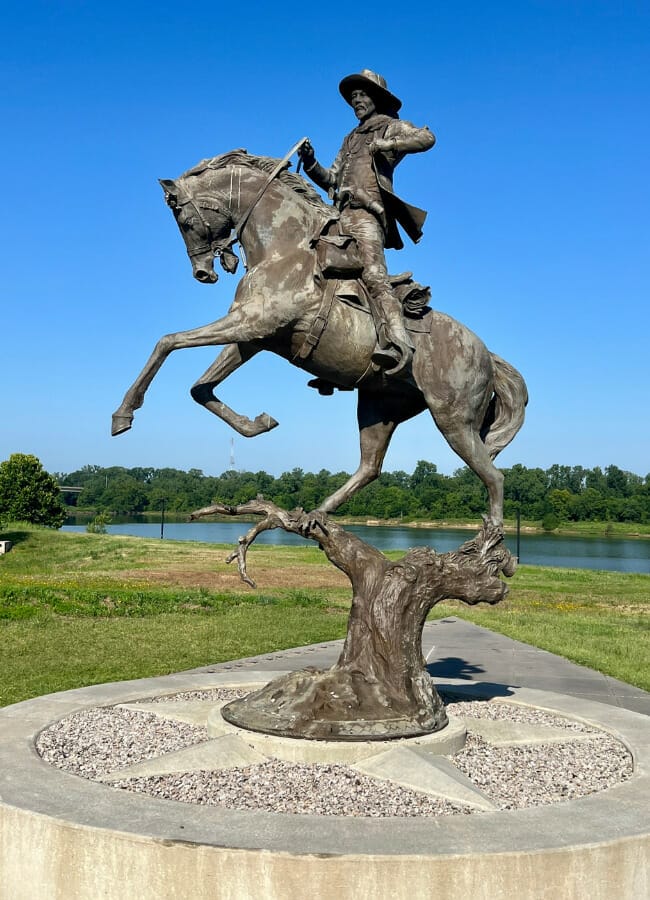
Connection of the U.S. Marshals in Fort Smith
Fort Smith was the obvious choice for many because of the long history of outlaws and apprehensions along the western boundary of the United States. Protection in remote areas became necessary, and by establishing the Federal Court of Western Arkansas in 1851, the U.S. Marshals expanded their jurisdiction to cover the new Indian Territory.
This also provided a sparsely populated area for outlaws and fugitives to hide out. After 1875, Judge Issac Parker and his Marshals posse were responsible for policing this area and collecting the lawless in a region with a savage reputation. Bass Reeves, an emancipated slave and self-made lawman, was among the first appointed by the new judge. His reputation among both sides of the law made him a perfect candidate for Marshal, and his desire to return hidden criminals alive, had some criminals walking up to him and turning themselves in.
With these things in mind, a generous land donation from the Robbie Westphal family helped bring The U.S. Marshals Museum to the banks of the Arkansas River with an easy westward view into Oklahoma. In a campaign called “Bring Home,” the site selection committee created a reminder of the deep roots of the U.S. Marshals in the Wild West days of Fort Smith.
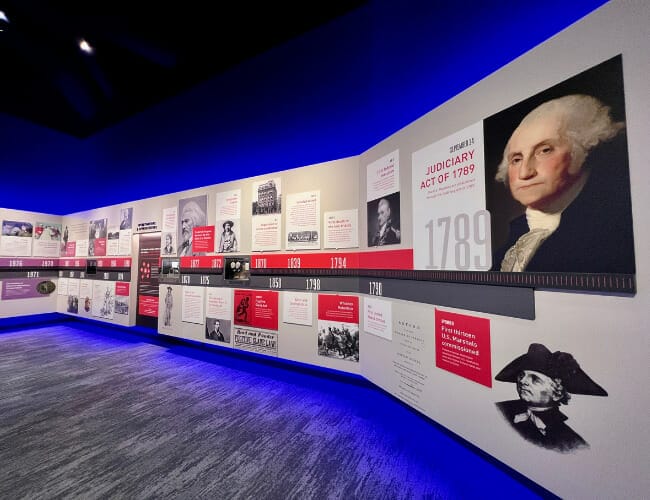
What can you expect in the U.S. Marshals Museum?
The team at Thinkwell Group designed the U.S. Marshals Museum with multiple visitors in mind. They knew visitors would see Arkansas for the first time, engage in a first encounter with the U.S. Marshals’ story, relive moments from their own lives, and find a gathering place along the state’s western border. Visitors are greeted by an expansive atrium anchoring the star-shaped building with a gift shop and cafe on either end. The Hall of Honor and museum exhibits comprise the other flanking anchors of the signature Marshals’ badge architectural design.
Some of the exhibits you will encounter at the U.S. Marshals Museum include:
- A timeline of historical event highlights.
- A Frontier Marshals area that connects the history of Fort Smith and the U.S. Marshals through the western frontier and interactions with Native American tribes.
- An interactive old western saloon where the bartender shares stories of Marshal expeditions while you stand at the bar or play a card game with icons of the Old West.
- An iconic display of four Marshals gathered around a campfire, sharing stories about their experiences from colonial days to modern missions.
- A decision room, where you hear a case and decide how to resolve and disperse Marshals.
- Information and artifacts about critical historical events where U.S. Marshals served.
- A simulation center where you become the Marshal, completing a mission under a test for fitness and attention to detail.
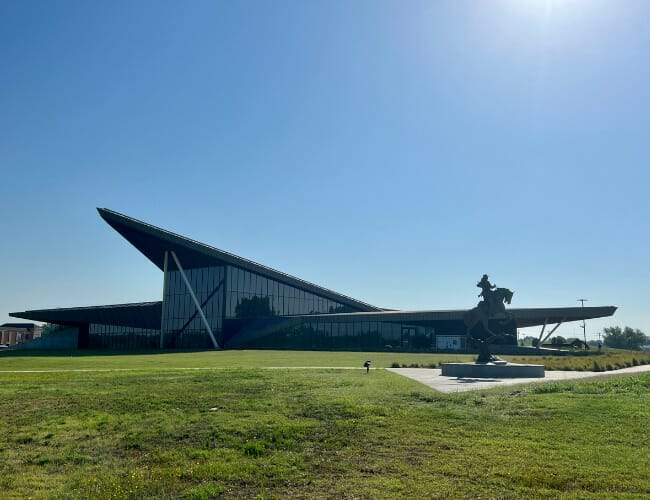
How can you keep experiencing the museum?
- The museum hosted lectures and guest historians leading up to the opening, and they do not plan for this to stop. Check the museum’s events page for extra things to add to your experience.
- Sign up for the newsletter to stay informed.
- Visit The Outpost gift shop for apparel, books and commemorative elements.
- Educational resources for teachers and events for young minds, including online learning resources and Museum at Home artifacts.
- Marshal Myths series and Curator Conversations
- Visit Fort Smith and see the sites where history unfolds.
This summer, a robust national platform grew for Arkansas after completing a trifecta of national museums telling a broader story near home. As tourists continue to climb toward Arkansas with our National Parks, bike trails, and ATV courses, they now have urban experiences through the Clinton Presidential Library, U.S. Marshals Museum, and Crystal Bridges Museum of American Art.
U.S. Marshals Museum
789 Riverfront Drive | Fort Smith | 479-242-1789
Website: Museum | U.S. Marshals Service
Follow: Facebook | Instagram | Twitter | YouTube
Join the Conversation
Leave a Comment
4 responses to “U.S. Marshals Museum: A Badge for Arkansas”
 Leave a Reply
Leave a Reply
We do the work.
You check your email.
Sign up for our weekly e-news.
Get stories sent straight to your inbox!












 Leave a Reply
Leave a Reply
[…] a recent visit to the U.S. Marshals Museum in Fort Smith, my dad and I stopped in downtown Van Buren to grab lunch. I’ve heard much […]
[…] U.S. Marshal’s Museum in Fort Smith provided the story cover image from Madison’s recent hometown welcome […]
[…] U.S. Marshals Museum opened in 2023 and is dedicated to the history and work of the U.S. Marshals Service, the oldest […]
[…] of the newest museums in Arkansas, the U.S. Marshals Museum, opened July 1, 2023. The 53,000 square-foot Mary Carleton and Robert A. Young III Building and […]